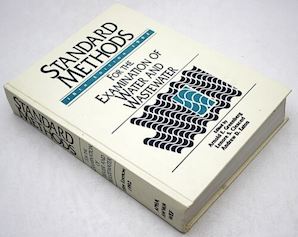
Curated with aloha by
Ted Mooney, P.E. RET

The authoritative public forum
for Metal Finishing 1989-2025

-----
Determination of a non-ionic surfactant
Q. I am interested in a method for determining the concentration of a non-ionic a surfactant in water. I am familiar with the CTAS method, but have heard of a spectroscopic method requiring no sample preparation in the mid to high 200nm range. Are you familiar with such a method?
Pate Linton- K'ville, North Carolina
AWWA

on AbeBooks
or eBay or
Amazon
(affil links)
A. Sorry, don't know. But for the purpose of completeness, (and so I didn't completely waste my time looking up the method), I herewith post the reference for the CTAS method,
<== 'Standard Methods ...', 1985, 16th Edition, Method 512 C. Nonionic Surfactants as CTAS.
(Cobalt thiocyanate active substances)

Tom Pullizzi
Falls Township, Pennsylvania
Q, A, or Comment on THIS thread -or- Start a NEW Thread